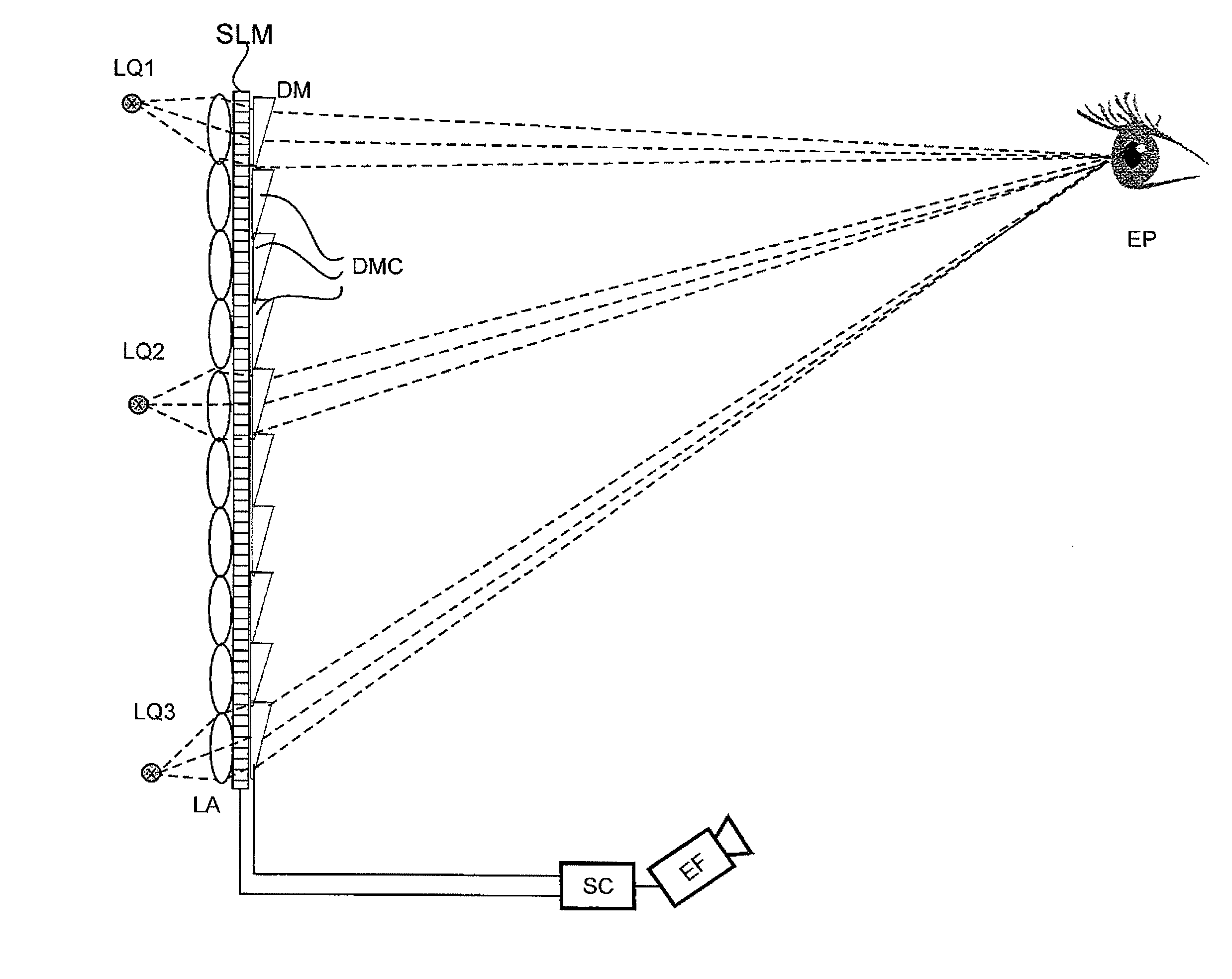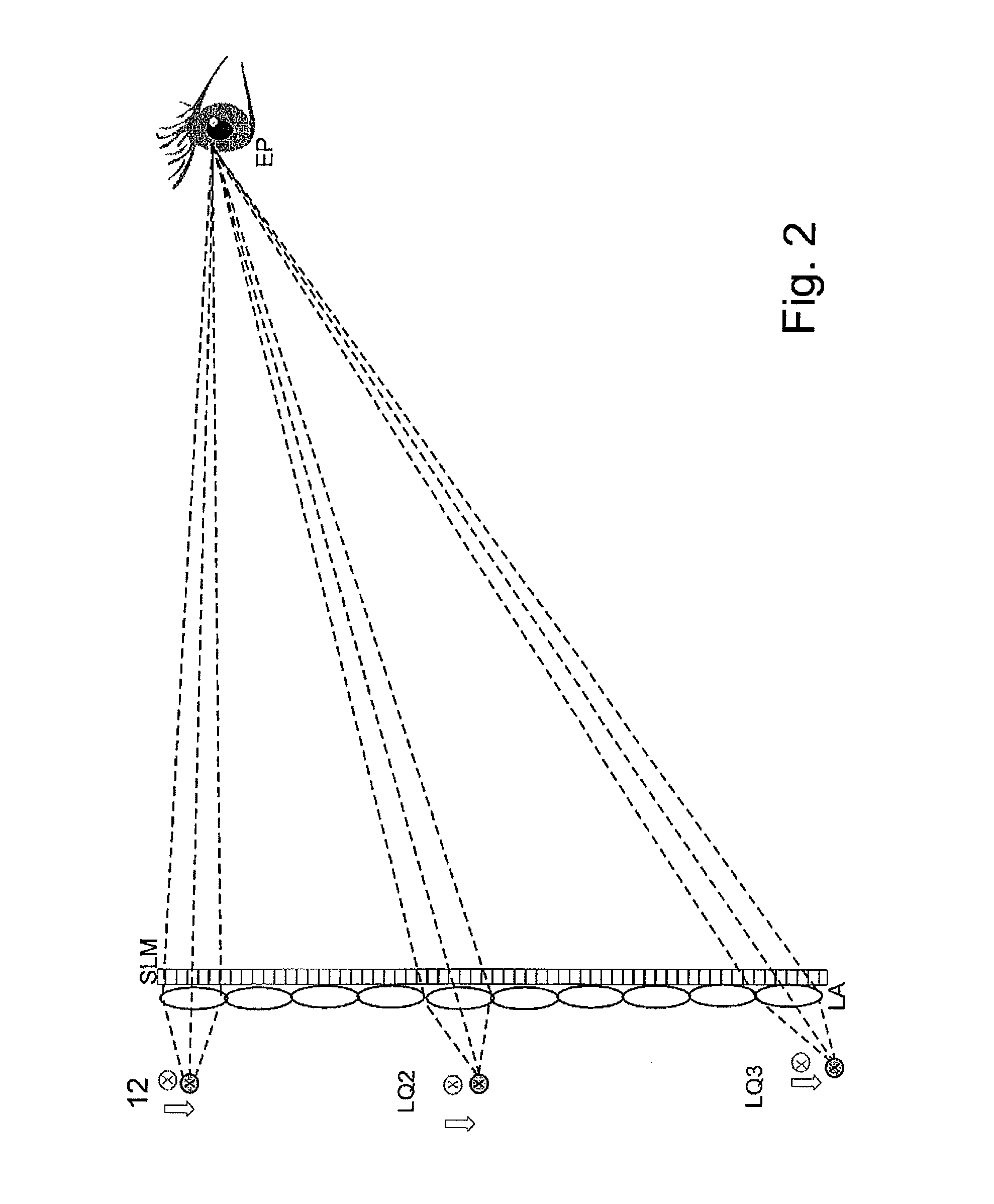Holographic Reconstruction System with an Optical Wave Tracking Means
- Summary
- Abstract
- Description
- Claims
- Application Information
AI Technical Summary
Benefits of technology
Problems solved by technology
Method used
Image
Examples
Embodiment Construction
[0058]In the following embodiments, an electronic system controller SC encodes sequences of video holograms directly on a large-area flat screen of a type known from video and TV technology, such as an LCD panel, which directly serves an observer as a display screen, and which has a surface area which is as large as possible so to achieve a large viewing angle when watching the reconstruction.
[0059]FIG. 1 shows a holographic reconstruction system according to the initial prior art solution with selected point light sources LQ1, LQ2 and LQ3, which emit light which is capable of generating interference, and which are part of an array of light sources. The array of light sources comprises for each imaging element of an array of focussing means LA a corresponding point light source LQ1, LQ2 or LQ3, which emit light which is capable of generating interference. Each imaging element of the array of focussing means LA forms together with a corresponding light source an illumination unit for...
PUM
 Login to View More
Login to View More Abstract
Description
Claims
Application Information
 Login to View More
Login to View More - R&D
- Intellectual Property
- Life Sciences
- Materials
- Tech Scout
- Unparalleled Data Quality
- Higher Quality Content
- 60% Fewer Hallucinations
Browse by: Latest US Patents, China's latest patents, Technical Efficacy Thesaurus, Application Domain, Technology Topic, Popular Technical Reports.
© 2025 PatSnap. All rights reserved.Legal|Privacy policy|Modern Slavery Act Transparency Statement|Sitemap|About US| Contact US: help@patsnap.com



